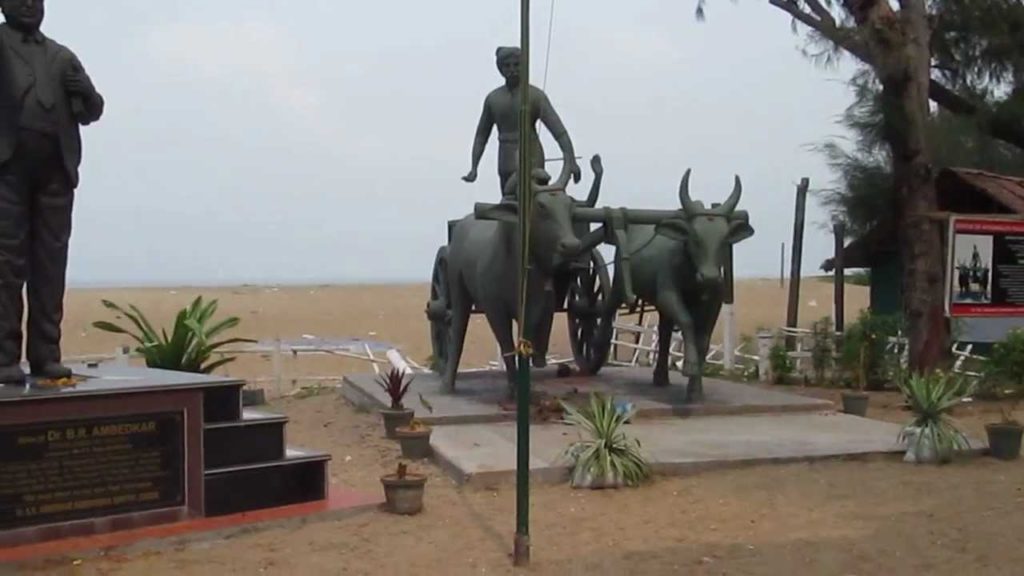
18th June (1941) in Dalit History – Death Anniversary of Ayyankali
18th June (1941) in Dalit History – Death Anniversary of Ayyankali
Ayyankali, the Dalit firebrand in Kerala who fought Caste apartheid through innovation and resistance that inspires even till today. A contemporary of Ambedkar he was born into the Pulaya community in Thiruvananthapuram. He burned with the injustices his community faced. Dalits were landless and exploited, punished for crossing into caste Hindu areas, and both men and women were targets of violence forced to into draconian states of undress.
In the face of this violence, Ayyankali took it as his life mission to challenge every form of Caste discrimination. His rebellion began with an ox-cart. Ayyankali dared to break the Caste restrictions by riding on the public road while also wearing caste Hindu clothes. Though attacked by the Upper Castes, his bold move launched the Southern Kerala movement for Dalit Rights that eventually won in 1900 the right for Dalits to walk along the public roads.
Ayyankali went further and launched the first schools for Dalits with Dalit teachers. Though the school was destroyed by upper caste thugs, this educational revolution could not be stopped. In 1907 the Travancore government passed an order mandating that all Dalit children be admitted into the schools. Despite this law, Upper Castes blocked its implementation to which Ayyankali led a statewide Dalit strike.
Through much difficulty the strike held and the battle for education extended to Dalit rights as exploitative landlords started whipping workers who dared to wear clothing and who also protested the landlords’ sexual exploitation of Dalit women. The outraged landlords started setting the homes of workers on fire. Ayyankali responded by setting the landlord houses on fire. Stricken with fear, never knowing when they might be attacked, the landlords sued for peace.
Through this and all his efforts, he constantly faced terrible violence and a state that abetted caste perpetrators. He often did not hesitate to retaliate with violence seeing it as a form of raw protest of the oppressed. He even banded together teams of brave Dalit men and women and organized martial arts training for them. This group became the “Ayyankali Pada” (Ayyankali’s Army). With the failure of the state implementing the rule of law for all, he then established his own people’s courts, including a supreme court!
Finally, he took on the Caste apartheid dress code for Dalit women where Caste Hindus insisted Dalit women could not cover their upper bodies. His challenge overturned this measure in 1916 and sent a message that the upper caste sexual exploitation of Dalit communities was unacceptable.
To his enduring spirit of rebellion, we salute Ayyankali!
Remembering Chaliyatheruvu
In 1898, 5 years after the spectacular Villuvandi struggle when he asserted the Dalits right to use public roads, Ayyankali and his followers walked from Venganoor to Balaramapuram along the public road. Their mission was to enter Aaralummoodu Puthenkada Market. They had braved stiff opposition all along the route. However, the opposition reached a new high when they reached Chaliyatheruvu. Ayyankali instructed his followers that they should not hurt anybody. But if they were attacked they should return two blows for every one blow received.
What followed was nothing short of an armed conflict. Many lost their lives. In spite of all the physical violence, Ayyankali and his followers stood their ground.~
Watch out! Ayyankali is on his way!
In 1907, Ayyankali started Sadhujana Paripalana Sangham realizing that an organization is important to bring Dalits together across sub-caste divisions and religions.
Access to school was one of the major demands of the new organization. As a result of their efforts, the government issued a positive order in June 1907. This order gave Dalits access to schools. However, fearing opposition from the upper castes, the senior officials did not implement it.
Not a single school responded positively. The New Diwan, P. Rajagopalachari and Director of Education, Mr. Mitchell issued yet another order in 1910. However the situation did not change. Ayyankali strongly felt a need to act. On the strength of the government order, Ayyankali walked to Oorootambalam School holding Panchami’s hand. Her brother Kochukutty also accompanied them. Thus Ayyankali launched the first mass agitation in Indian history for making education accessible to all sections of society. ~
In 1960, 6-year-old Ruby Bridges, accompanied by U.S. Marshals, became the first black child to enter an all-white William Frantz Elementary School in New Orleans.
Fifty years earlier, in 1910, Ayyankali had started a civil rights movement on his own. After a long drawn school entry struggle, one day he decided to brave the strong and violent upper caste opposition and holding the hand of 5-year-old Panchami walked her into the Oorootambalam School in Balaramapuram in Kerala.
Yes, Ayyankali is on his way. Watch out!
Kerala had not witnessed such a spectacle before.
Those who witnessed this sight could not believe their eyes. A Dalit was openly defiling the caste system, with such spunk and dignity!
The upper caste Nairs were enraged. For a Dalit, entering the road was itself an offense – and that too in a fancy bullock cart, mulmul mundu let down to his ankles!
This was something they had never imagined. They tried to pelt stones on him. But Ayyankali skillfully evaded the stones. A few of the Nair goons stood on the road and tried to stop him. They threatened
and cautioned him of consequences.
But nothing could stop Ayyankali. He responded to them by saying –
‘Yes, Kali is learning and he will teach you a lesson too!‘
We salute the legend on his death anniversary!



+ There are no comments
Add yours